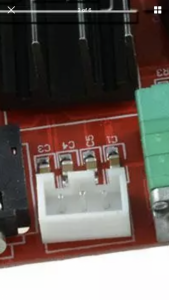Hi Guys,
Let me ask one question - 'Do you have a 12 volt box that has nice low-medium bass that tends to crap out as you crank it loud?
If the answer is yes, then maybe a main amplifier upgrade is for you. On the weekend I completed just such a project on my Sanyo C35. (The same box I did a speaker upgrade to a while back).
Let me just say the improvement was astounding.
Between the preamp and the main amp is usually the headphone jack. If you intercept the signal at this point (after the headphone jack), you can feed the signal to the new class D amp. The speakers are then wired to the new amp.
As you are intercepting the signal after the pre-amp stage, all controls including your VU meters, volume, balance, bass, treble etc controls operate as per normal.
If you get a class D amp with a volume pot, you can control how much power is being fed to your speakers. Keep the class D amp volume at modest levels and you can keep running your factory speakers.
If you really want max performance, upgrade your speakers, crank the new amp volume pot and you'll have around 20 watts RMS x 2 coming out your M9990 for example!
Keep your power feed for the new amp away from your tuner, but make sure your feed is not powered when the unit is powered down.
Good luck and have fun. Remember, with this mod, you won't need to buy an M90 or C100L to get big power anymore. This would be an especially good mod for Wheely owners!!!
James....
View attachment 37123View attachment 37121View attachment 37125
Let me ask one question - 'Do you have a 12 volt box that has nice low-medium bass that tends to crap out as you crank it loud?

If the answer is yes, then maybe a main amplifier upgrade is for you. On the weekend I completed just such a project on my Sanyo C35. (The same box I did a speaker upgrade to a while back).
Let me just say the improvement was astounding.

Between the preamp and the main amp is usually the headphone jack. If you intercept the signal at this point (after the headphone jack), you can feed the signal to the new class D amp. The speakers are then wired to the new amp.
As you are intercepting the signal after the pre-amp stage, all controls including your VU meters, volume, balance, bass, treble etc controls operate as per normal.

If you get a class D amp with a volume pot, you can control how much power is being fed to your speakers. Keep the class D amp volume at modest levels and you can keep running your factory speakers.
If you really want max performance, upgrade your speakers, crank the new amp volume pot and you'll have around 20 watts RMS x 2 coming out your M9990 for example!

Keep your power feed for the new amp away from your tuner, but make sure your feed is not powered when the unit is powered down.
Good luck and have fun. Remember, with this mod, you won't need to buy an M90 or C100L to get big power anymore. This would be an especially good mod for Wheely owners!!!
James....

View attachment 37123View attachment 37121View attachment 37125








